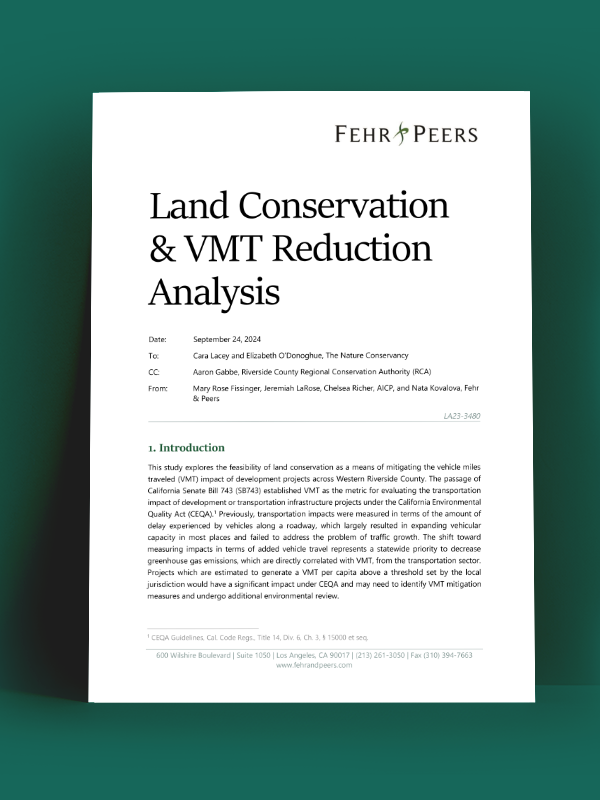Land Conservation and VMT Reduction Analysis
Land Conservation and VMT Reduction Analysis
Policies targeted at reducing Vehicle Miles Traveled (VMT) can be a powerful tool for advancing sustainable land development patterns. Our new white paper explores how VMT mitigation programs could protect biodiversity, preserve critical habitats, and support land conservation.
We recently worked with the Western Riverside County Regional Conservation Authority (RCA) and The Nature Conservancy to explore how VMT credits could be leveraged to fund conservation efforts, aligning transportation and conservation goals. By converting high-VMT parcels into conservation areas and instead encouraging development in lower-VMT areas, this approach helps combat sprawl while achieving long-term environmental benefits.
Read the full white paper to learn more about this innovative strategy, and contact us to explore how it could apply to your projects.
share this article
Contributors
Chelsea Richer
Climate & Resilience Discipline Leader
AICP
Email Me
Mary Rose Fissinger
Senior Engineer/Planner
Email Me
Jeremiah LaRose
Senior Associate
Email Me
Nata Kovalova
Engineer/Planner
Email Me
Explore More
Planning for the Future of E-Micromobility
E-bike and e-scooter usage continues to expand nationwide, creating challenges for planners. These two papers explain what’s happening and how we can help our clients prepare for the future.
Come Find Us at TRB 2026
At the 2026 TRB Annual Meeting, our team will share insights on topics ranging from the Safe System Approach to supply chain challenges. We’ll also participate in the career fair.
What Seattle’s Travel Trends Reveal About Post-Pandemic Mobility
The 2023 Puget Sound travel study revealed notable changes in how people get around. Our team identified emerging trends that may hold lessons for other regions.








